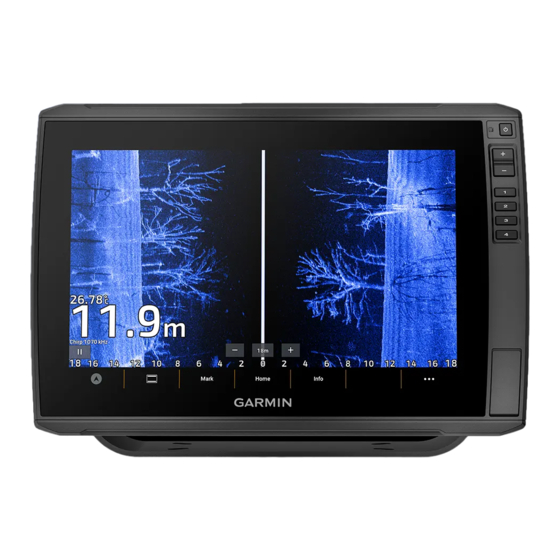
Garmin ECHOMAP ULTRA 2 Manuals
Manuals and User Guides for Garmin ECHOMAP ULTRA 2. We have 4 Garmin ECHOMAP ULTRA 2 manuals available for free PDF download: Owner's Manual, Installation Instructions Manual, Quick Start Manual
Garmin ECHOMAP ULTRA 2 Owner's Manual (230 pages)
Brand: Garmin
|
Category: Controller
|
Size: 18 MB
Table of Contents
-
Introduction11
-
Front View11
-
Device Keys12
-
Menu Bar15
-
Home Screen16
-
Chart Menu37
-
Chart Layers37
-
Destinations46
-
Waypoints47
-
Routes49
-
Tracks55
-
Boundaries57
-
Sail Racing59
-
Polar Tables61
-
Wind Hold63
-
Livevü Layer75
-
True Motion76
-
Flasher View80
-
Sonar Setup83
-
Sonar Alarms86
-
Autopilot95
-
Yamaha Autopilot102
-
Turning on DSC107
-
DSC List107
-
Viewing Graphs119
-
CHARGE Overlay126
-
Media Player136
-
Creating a Group139
-
Editing a Group139
-
Playing Music140
-
Radio140
-
Presets141
-
DAB Playback141
Advertisement
Garmin ECHOMAP ULTRA 2 Owner's Manual (164 pages)
Brand: Garmin
|
Category: Marine GPS System
|
Size: 12 MB
Table of Contents
-
Introduction11
-
Front View11
-
Device Keys11
-
Menu Bar15
-
Home Screen16
-
Chart Menu37
-
Chart Layers37
-
Destinations47
-
Waypoints48
-
Routes50
-
Tracks56
-
Boundaries58
-
Sail Racing60
-
Polar Tables62
-
Wind Hold64
-
Flasher View77
-
Sonar Setup81
-
Sonar Alarms84
-
Autopilot93
-
Turning on DSC104
-
DSC List104
-
Viewing Graphs115
-
CHARGE Overlay121
-
Warning Manager130
-
Viewing Messages130
-
Media Player131
-
Creating a Group134
-
Editing a Group134
-
Playing Music135
-
Radio135
-
Presets136
-
DAB Playback136
-
DAB Presets137
Advertisement



